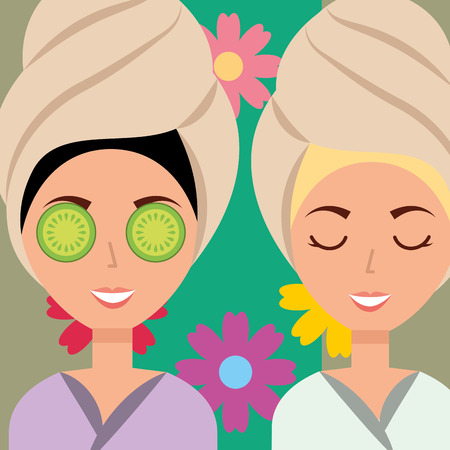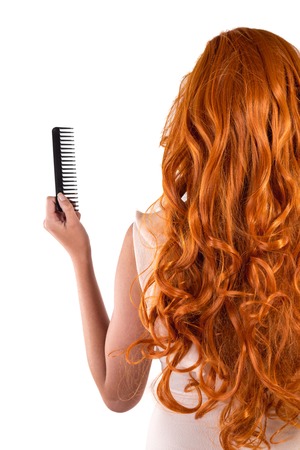1. The Rise of Hair Gels in the ’80s
How the 1980s Set the Stage for Hair Gel Popularity
The 1980s marked a turning point in American haircare, with hair gels becoming an essential part of everyday styling routines. This era was all about making bold statements—big hair, dramatic volume, and defined shapes were everywhere. Pop culture icons like Madonna, Michael Jackson, and the cast of “Miami Vice” inspired millions to experiment with their looks. Whether you were rocking gravity-defying spikes or slicked-back styles, hair gel was the go-to product for achieving that perfect hold.
The Influence of Pop Culture
Music videos on MTV and blockbuster movies played a huge role in shaping trends. Bands like Bon Jovi and Duran Duran made wild, voluminous hair mainstream. The popularity of these styles meant that strong-hold products were suddenly in high demand. Drugstores across America began stocking shelves with brightly colored gel bottles promising “extreme hold” and “all-day control.”
Popular ’80s Hairstyles Fueled by Hair Gel
| Hairstyle | Description | Celebrity Inspiration |
|---|---|---|
| Mullet | Short in the front, long in the back; required firm hold for both parts | Billy Ray Cyrus |
| Spiked Hair | Hair standing straight up, often styled with colored gels | Cyndi Lauper |
| Slicked-Back Look | All hair combed back smoothly, kept in place with gel | Don Johnson (Miami Vice) |
| Feathered Bangs | Bangs styled outwards and upwards, needing flexible hold | Farrah Fawcett |
Why Americans Loved Hair Gel in the ’80s
The appeal of hair gel came down to self-expression and convenience. It offered a quick way to transform your look before heading out to a party or school dance. With just a dollop of product, anyone could recreate the runway-ready styles seen on TV screens and magazine covers. Plus, as beauty standards shifted toward individuality, people embraced unique hairstyles that wouldn’t be possible without the strong hold of gel.
2. The ’90s: From Structured Styles to Casual Cool
From Slicked-Back to Effortless: A Cultural Shift
The 1990s marked a big change in American hair trends. In the ‘80s, hair was all about bold volume and perfectly sculpted styles. But as the ’90s rolled in, so did a new attitude—one that embraced grunge, minimalism, and a more relaxed vibe. Suddenly, hair didn’t have to be perfect; it just had to look cool without trying too hard. This shift wasn’t just about fashion—it also changed how people used hair gel and what they expected from it.
How Grunge Changed Hair Gel Game
With bands like Nirvana and Pearl Jam leading the way, grunge culture inspired Americans to ditch stiff, helmet-like hair for tousled locks and “I woke up like this” texture. Hair gels needed to keep up. People wanted products that could help them achieve messy spikes, piece-y bangs, or shaggy layers—without making their hair crunchy or greasy. Traditional strong-hold gels took a back seat, while lighter formulas and flexible holds became popular.
Key Hair Gel Trends in the ’90s
| Style Trend | Hair Gel Feature | Popular Use |
|---|---|---|
| Grunge/Bedhead Look | Lighter hold, matte finish | Tousled texture, separation |
| Casual Spikes & Tips | Flexible hold gels & waxes | Spiky bangs, textured ends |
| Slicked-Back (Minimalist) | Medium hold, shine control | Sleek ponytails, pulled-back looks |
| Curtain Bangs (Boy Bands) | Soft hold, non-sticky feel | Naturally parted bangs, soft movement |
Innovation in Hair Gel Formulas
The demand for more natural-looking hair led brands to rethink their formulas. Alcohol-free gels started popping up on shelves to prevent dryness and flaking. Some companies even added nourishing ingredients like aloe vera or vitamin E. The result? Gels that offered control without sacrificing touchability or hair health.
Everyday Uses: How Americans Styled Their Hair in the ’90s
- Less is More: Instead of loading up on product, people used just enough gel for light definition.
- Mashups: Mixing gel with mousse or cream to create custom textures became common.
- Unisex Appeal: Both men and women reached for lightweight gels to shape pixie cuts, layered bobs, and undercuts.
- Avoiding “Helmet Hair”: Flexible hold gels made it easy to re-style hair throughout the day without stiffness.
The ’90s era was all about breaking free from rigid hair rules. With changing music scenes and pop culture icons influencing trends, hair gel evolved into a tool for personal expression—helping Americans embrace effortless style with just the right amount of edge.

3. New Millennium, New Ingredients
The early 2000s marked a huge shift in the world of American hair gels. After the bold, crunchy looks of the ’80s and the super-strong hold of the ’90s, people started wanting something different. Consumers began looking for products that felt lighter, looked more natural, and didn’t leave hair feeling stiff or sticky.
Lightweight & Natural: The Early 2000s Hair Gel Revolution
As hairstyles moved toward a more relaxed vibe—think beachy waves, textured layers, and messy buns—hair gel brands had to adapt. The focus shifted from super-hold formulas to flexible, touchable results. Brands also started paying attention to health and ingredient transparency, responding to growing concerns about harsh chemicals.
Key Ingredient Changes in Hair Gels (2000s vs Previous Decades)
| Era | Main Ingredients | Main Benefits | User Experience |
|---|---|---|---|
| 1980s-1990s | Alcohol-based polymers, synthetic resins | Maximum hold, wet look | Crunchy texture, flaking, stiffness |
| Early 2000s | Aloe vera, glycerin, panthenol (Vitamin B5), water-based polymers | Moisture retention, flexible hold, shine without stiffness | Softer feel, non-flaky finish, easier restyling |
What Americans Wanted From Their Hair Gels:
- No more helmet head! People wanted gels that let their hair move naturally.
- Ingredients that sounded familiar—like aloe vera and coconut water—became more appealing than chemical-sounding names.
- Products that could be used every day without drying out hair or causing buildup.
- Versatility: gels that worked for spiking short cuts and defining curls alike.
This movement toward innovation led to a wave of new products on drugstore shelves and in salons. For many Americans, this was the start of choosing haircare not just for style—but for overall hair health too.
4. The Role of Diversity and Influencer Culture
In the last decade, American haircare has experienced a true revolution, driven by social media and the celebration of diversity. Today, hair gel products are no longer made for just one “standard” hair type or look. Instead, brands now recognize that Americans have all kinds of hair textures, styles, and cultural backgrounds. This shift is due in large part to broader representation in advertising and the powerful influence of social media personalities.
How Social Media Changed Hair Gel Trends
Social platforms like Instagram, TikTok, and YouTube have given everyday people—and especially influencers—a platform to show off their unique hairstyles and routines. When creators with different hair types share their favorite gels or styling hacks, their followers take notice. This real-time feedback loop pushes brands to innovate faster and meet the needs of every customer.
Key Impacts of Social Media on Hair Gel Products
| Aspect | Description | Example |
|---|---|---|
| Inclusivity | Brands now create gels for curly, coily, wavy, and straight hair. | A gel marketed as “curly girl approved.” |
| User-Driven Trends | Viral styling techniques shape product development. | The rise of “edge control” gels from TikTok tutorials. |
| Transparency & Education | Influencers demand ingredient transparency and demo how-to’s. | YouTube videos explaining alcohol-free formulas. |
| Cultural Representation | Campaigns feature diverse models and real customers. | Afro-Latina influencers in mainstream gel ads. |
The Power of Representation in Marketing Strategies
Diversity isn’t just a buzzword—it’s become a key business strategy. Brands that highlight a wide range of hair types in their campaigns build trust and loyalty among American consumers. When shoppers see someone who looks like them using a product with great results, they’re more likely to try it themselves. This approach also helps break down old stereotypes about what “good” hair should look like, opening up new possibilities for self-expression.
Quick Tip: Follow Your Favorite Creators!
If you want to find the best gel for your own hair type or style goals, check out content from influencers who share your texture or vibe. Their honest reviews often reveal hidden gems—and help you avoid products that don’t deliver on their promises.
5. Current Trends: Eco-Friendly and Inclusive Solutions
In recent years, American haircare has taken a major turn toward cleaner, greener, and more inclusive options—especially when it comes to hair gels. Today’s consumers are looking for products that not only style their hair effectively but also fit their lifestyle values and unique hair types. Let’s break down the main trends shaping the market:
Clean Ingredients: What’s In, What’s Out
Modern hair gels are moving away from harsh chemicals like alcohols, parabens, and synthetic fragrances. Instead, brands are embracing plant-based ingredients and natural extracts to provide hold without the crunch or flakes. Here’s a quick comparison:
| Traditional Hair Gels (’80s–2000s) | Current Eco-Friendly Gels |
|---|---|
| Alcohol-based formulas | Aloe vera & flaxseed gel bases |
| Synthetic fragrances | Essential oils for scent |
| Parabens & phthalates | No parabens, cruelty-free |
| Limited focus on ingredient sourcing | Sustainably sourced ingredients |
Sustainability Matters More Than Ever
Eco-friendly isn’t just a buzzword. From packaging made of recycled materials to refillable containers, American brands are pushing for less waste. Many companies highlight their carbon-neutral manufacturing processes or offer take-back programs for empty bottles. This resonates with younger consumers who want products that align with their environmental values.
Formulated for All Hair Types and Textures
The days when most gels were designed for just straight or wavy hair are over. Now, brands recognize America’s diversity and formulate products for every texture—from fine and straight to thick, curly, or coily. You’ll find labels proudly stating “for all hair types” or specifying which curl pattern the product is best for (like 2A-4C).
Examples of Inclusive Formulations:
| Hair Type/Texture | Popular Gel Features | Common Ingredients |
|---|---|---|
| Straight/Fine Hair | Light hold, non-greasy, volumizing | Bamboo extract, panthenol |
| Wavy/Curly Hair (2A–3C) | Medium hold, anti-frizz, definition-boosting | Aloe vera, shea butter, coconut oil |
| Kinky/Coily Hair (4A–4C) | Strong hold, moisture-rich, shrinkage control | Castor oil, flaxseed gel, jojoba oil |
Takeaway: The Modern Gel Experience in America
The evolution of hair gels in the U.S. shows how far we’ve come—from crunchy styles of the ’80s to today’s eco-conscious and inclusive solutions. American consumers now expect clean ingredients that work for everyone—no matter their hair type—while also caring about sustainability at every step.
6. DIY and Customization in American Haircare
In recent years, the trend of do-it-yourself (DIY) hair gels and personalized styling products has taken off in the United States. Many consumers are moving away from mass-produced gels, looking instead for unique formulas that match their specific hair needs and lifestyles. This shift is driven by a desire for healthier ingredients, eco-friendly solutions, and the ability to experiment with different textures and holds.
Why DIY Hair Gels?
American consumers today want more control over what goes into their beauty products. With increasing concerns about chemicals, allergies, and sustainability, homemade gels offer a straightforward solution. People can choose natural ingredients like aloe vera, flaxseed, or essential oils to create gels that are gentle on both hair and scalp.
Popular Ingredients in Homemade Hair Gels
| Ingredient | Key Benefit | Common Use |
|---|---|---|
| Aloe Vera | Moisturizing & Soothing | Frizz control, light hold |
| Flaxseed | Natural Hold & Shine | Curl definition, medium hold |
| Coconut Oil | Nourishing & Softening | Smoothing, added shine |
| Essential Oils (Lavender, Tea Tree) | Fragrance & Scalp Health | Scent boost, scalp care |
The Rise of Personalized Gels
Alongside DIY approaches, many American brands now offer customizable gels where customers can select factors like scent, strength of hold, and even packaging. This service appeals especially to people with unique hair types—such as curly or textured hair—who often struggle to find one-size-fits-all solutions in stores.
Benefits of Custom Hair Gels:
- Bespoke Formulas: Products made specifically for your hair type and styling needs.
- Transparency: Full knowledge of every ingredient used.
- Sustainability: Options for refillable packaging and eco-conscious ingredients.
- Allergy-Friendly: Ability to exclude potential irritants or allergens.
How Americans Are Sharing Their Recipes
The popularity of platforms like YouTube, TikTok, and Instagram has helped spread homemade gel recipes quickly across the country. Influencers and everyday users alike share tutorials, tips on ingredient sourcing, and before-and-after results. This community-driven approach encourages experimentation and learning among both beginners and seasoned home chemists.


